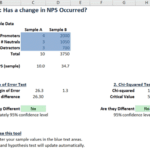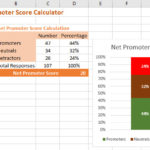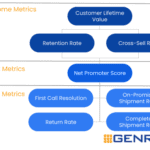Businesses and their staff have plenty of questions about NPS and in this post we answer the most common and perplexing. Read on for all the answers.
Fred Reichheld, of management consulting firm Bain & Company, is credited with inventing and publishing NPS in a Harvard Business Review article titled: The One Number You Need to Grow in December 2003. Reichheld was well known in the customer loyalty industry and worked with colleagues and company Satmetrix Systems, Inc to perform the research underlying Net Promoter Score.
NPS allows businesses to predict the loyalty of a customer using a simple survey question. Combining this data with information about what customers like and dislike enables business to align their products and services to increase revenue and profit.
The easiest way to calculate NPS in Excel is to use the Excel, or the Google Sheets, COUNTIF function, to count the 0-6’s (Detractors), 7-8 (Neutrals), 9-10’s (Promoters) and perform the simple NPS maths on your responses.
NPS measures the loyalty of a business’s customers. It can be used on individual customers, customer A vs customer B or an entire customer base: the higher the score, versus their competitors, the more loyal their customers.
A good Net Promoter Score varies by industry and country. For instance, NPS benchmark information shows that a good score in the Health Insurance industry is 35 but a good NPS in Tablet Computers is more than 70. To assess your business correctly requires specific Net Promoter Benchmark research.
Its not possible to calculate NPS using a 5 point scale. The NPS scale is 0-10, an 11 point scale. It looks possible to use a 5 point scale by simply equating scores, e.g. 5 -> Promoter, 4 -> Neutral, 1-3 -> Detractor, but this misses the important 0 score. 0 is important in NPS as it clearly anchors the low side of the scale and provides a 4th Detractor score
Many companies keep their NPS private but some publicise them in press releases and earnings reports. Due do the many ways NPS can be manipulated in the data collection process, public reports of scores should not be relied upon.
No – NPS is the difference between two percentages (percentage of Promoters less percentage of Detractor). The generates a score between -100 and +100 but it is not a percentage in the common use of the term.
In many way the 0 score is a very specific message from your customer. They are letting you know that they’re “Really, Really Unhappy” but the are still engaged. People who respond with a zero are often the easies to turn around to a 1-, all you have to do is re-engage with them.
Fred Reichheld, of management consulting firm Bain & Company, publicly published the first document on NPS in 2003 in a Harvard Business Review article titled: The One Number You Need to Grow in December 2003.
The NPS formula is (Percentage of Promoters) less (Percentage of Detractors) for your sample. A more simple way to calculate it is (Number of Promoters less Number of Detractors) divided by (Total Number of Respondents) or (#P – #D) / #T
A NPS that is higher than your competitors means that you will be growing faster and have more customer loyalty. So, in many ways any score that is above your competitors is an acceptable NPS.










